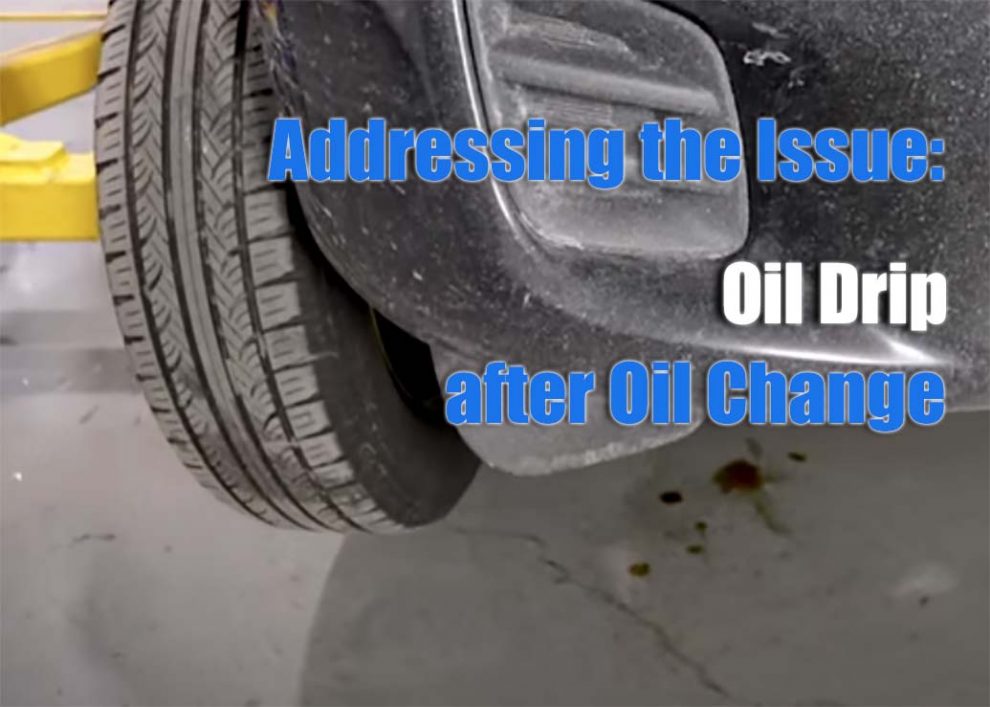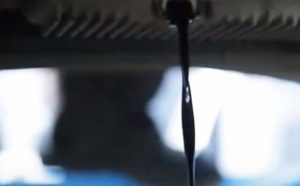The engine is the heart of every vehicle, and its blood, metaphorically speaking, is the engine oil. This lubricating substance plays a paramount role in ensuring seamless engine operation by reducing friction between the numerous moving parts. As time progresses, this oil accumulates contaminants, degrades, and loses its efficacy, necessitating an oil change. This maintenance activity involves draining out the old, spent oil, removing the old oil filter, and replenishing the system with fresh, clean oil. However, the transition from old to new oil isn’t always as seamless as one would expect. Despite the seeming simplicity of the procedure, a not-so-rare occurrence that many car owners report is noticing an oil drip after oil change. This can understandably lead to apprehensions, with vehicle owners questioning if perhaps a step was missed or mishandled during the oil change process.
Causes of Oil Drip After Changing Oil
Identifying an oil drip after oil change can stir up concerns, especially since the primary intent of the oil change was to boost the vehicle’s health. Several factors can be at play when this happens, and it’s essential to understand them to find effective solutions. Here’s a list of common reasons why you might notice an oil drip post oil change:
-
 Oil Filter Misalignment: The oil filter’s role is indispensable as it sieves out impurities from the oil, ensuring only clean oil circulates within the engine. If this filter is not correctly seated or tightened, it can become a leak source.
Oil Filter Misalignment: The oil filter’s role is indispensable as it sieves out impurities from the oil, ensuring only clean oil circulates within the engine. If this filter is not correctly seated or tightened, it can become a leak source. -
Excessive Oil: If more oil is poured in than what the engine can hold, it can result in overfilling. This excess oil needs an escape, often resulting in drips.
-
Compromised Oil Pan Seal: The seal or gasket of the oil pan ensures that the oil remains contained. Wear, tear, or incidental damage can lead to leaks.
-
Incomplete Draining: Sometimes, not all of the old oil gets drained out. When fresh oil is introduced, the remnants of old oil can be pushed out, leading to drips.
Importance of Selecting Suitable Auto Products
When it comes to vehicle maintenance and performance, every component and product used plays a crucial role. The choice of oil, for instance, can dictate how efficiently an engine runs and even influence occurrences like an oil drip after oil change. But it’s not just about the oil. Every product, from the brake fluid to the air intake system, holds significance. Take, for example, air intakes. A well-chosen air intake can enhance engine performance, fuel efficiency, and overall vehicle responsiveness. For those with an Acura, ensuring you pick the Best Cold Air Intake for Acura can make a notable difference. We delve deeper into this particular topic in another article, emphasizing the importance of product suitability and selection in vehicle upkeep.
Steps to Avoid Future Oil Drips
Ensuring a vehicle operates without hiccups isn’t just about addressing problems as they come, but also about taking proactive measures to avoid potential issues. The mystery of an oil drip after oil change can be demystified and prevented with the following steps:
-
Proper Oil Filter Installation: The first line of defense against oil drips is ensuring the oil filter is accurately placed. It’s more than just screwing it in; it’s about making sure there’s a perfect seal. Periodically check for signs of wear or misalignment.
-
Maintain Ideal Oil Levels: Don’t just pour and forget. After an oil change, make it a routine to check the oil levels. Ensure you’re adhering to the manufacturer’s recommendations. Too much or too little can both be problematic.
-
Routine Inspection of Oil Pan and Seals: The oil pan is a critical component that houses your engine oil. Regular checks can spot signs of damage or wear to the seal or gasket. Addressing these early can save costly repairs and prevent drips.
-
Thorough Draining: Patience is crucial. Allow the old oil ample time to drain out entirely before introducing fresh oil. This step ensures no mixing or pushing out of residual old oil.
-
Use of Quality Products: It’s tempting to opt for cheaper products, but remember, quality matters. Using top-tier engine oil and filters can make a significant difference in performance and reduce chances of post-change drips.
Conclusion
The occurrence of an oil drip after oil change is a manifestation of various factors, from simple oversights during the change process to wear and tear in the vehicle’s components. It’s a reminder of the intricate balance needed to maintain a vehicle efficiently. While such drips can be alarming, armed with knowledge, they can be addressed and, more importantly, prevented in future instances. Regular maintenance, informed choices, and a proactive approach are the trinity that ensures the longevity and peak performance of your vehicle. After all, vehicles, much like any other machinery, require consistent care and attention. As vehicle owners, understanding and responding to these needs not only safeguards our investment but also ensures a smoother, safer drive.


 Oil Filter Misalignment: The oil filter’s role is indispensable as it sieves out impurities from the oil, ensuring only clean oil circulates within the engine. If this filter is not correctly seated or tightened, it can become a leak source.
Oil Filter Misalignment: The oil filter’s role is indispensable as it sieves out impurities from the oil, ensuring only clean oil circulates within the engine. If this filter is not correctly seated or tightened, it can become a leak source.
Add Comment